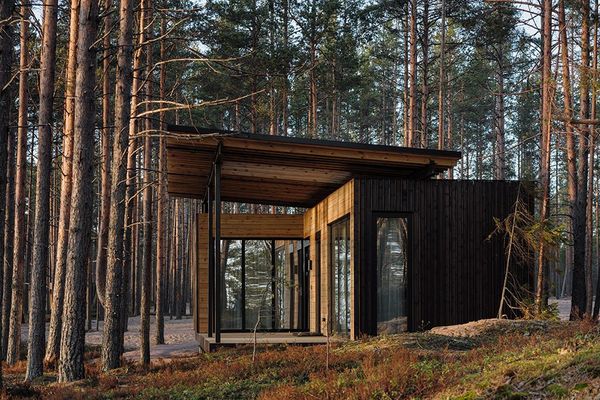A carefully designed, minimalist and loveable set of toys, taking a new approach to the concept of dollhouses: in addition to developing creative thinking and spatial sense, Nejbi also helps children acquire social sensitivity and other skills. We interviewed Agnieszka Pluszczewicz, the creator and originator of the game.
In the latest edition of our INCLUSIVE article series we hand-pick the works of the students of the Academy of Fine Arts in Katowice. Second part!
Even though Nejbi does not help shape our relationship with disabled people directly, it is important to recognize that social sensitization should start in early childhood: at that age, children are still very open, they handle diversity and difference as a natural thing, therefore it is very important to make sure that empathy and inclusion are not replaced by taboos as early as possible. Even though today there are several methods and practices available for sensitizing children, there are still not too many physical tools that would promote this process. The dollhouse called Nejbi offers an alternative to this problem, focusing on belonging to a small community as well as social differences and problems.

The toy set was designed by Agnieszka Pluszczewicz, who is currently working as an interior designer in the city of Gliwice. She already had experience in interior design and was intrigued by the field of small houses before she started her studies at the Academy of Fine Arts in Katowice. Thus it was kind of a given that she would pair her interior design skills with product design. “I like design projects addressing children very much, therefore I started to look for a topic and an interesting problem that I could solve with the help of design” – Agnieszka added. This is how the creation of Nejbi began, designed specifically for the 4-7 age group, which can be played by several children or can be used for activities performed with an adult. The perfection of the gameplay and the establishment of the perfect design was preceded by vast, in-depth research.
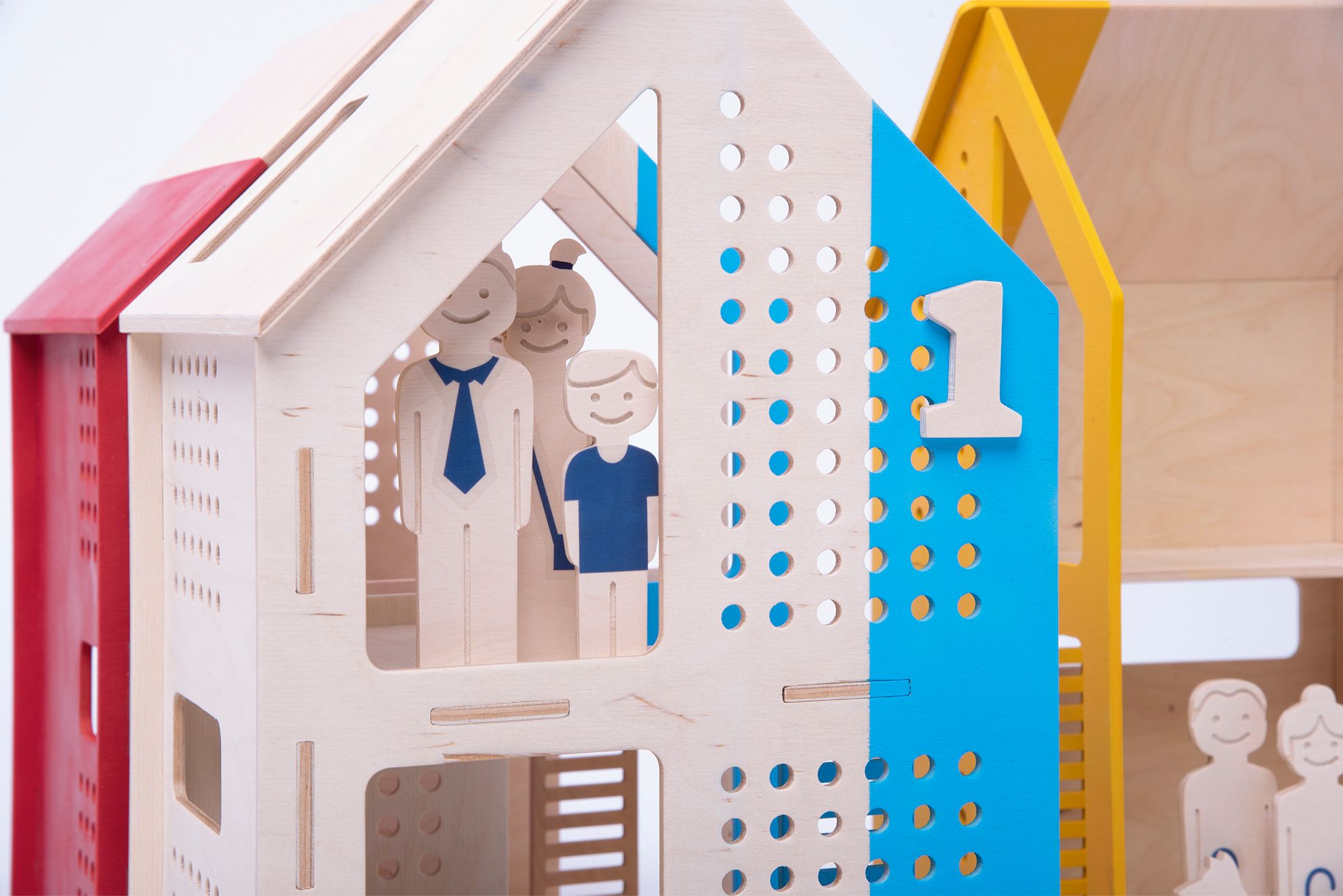
So that she could find what the dollhouses currently available on the market lack the most, Agnieszka teamed up with Polish dollhouse brand Boomini and examined the toys of the Toy Museum in Karpacz, the Dollhouse Museum in Warsaw and the products of several other brands. It became clear to her that it is multi-family buildings that are missing from today’s repertory the most. This problem provided the basis of her toy set.
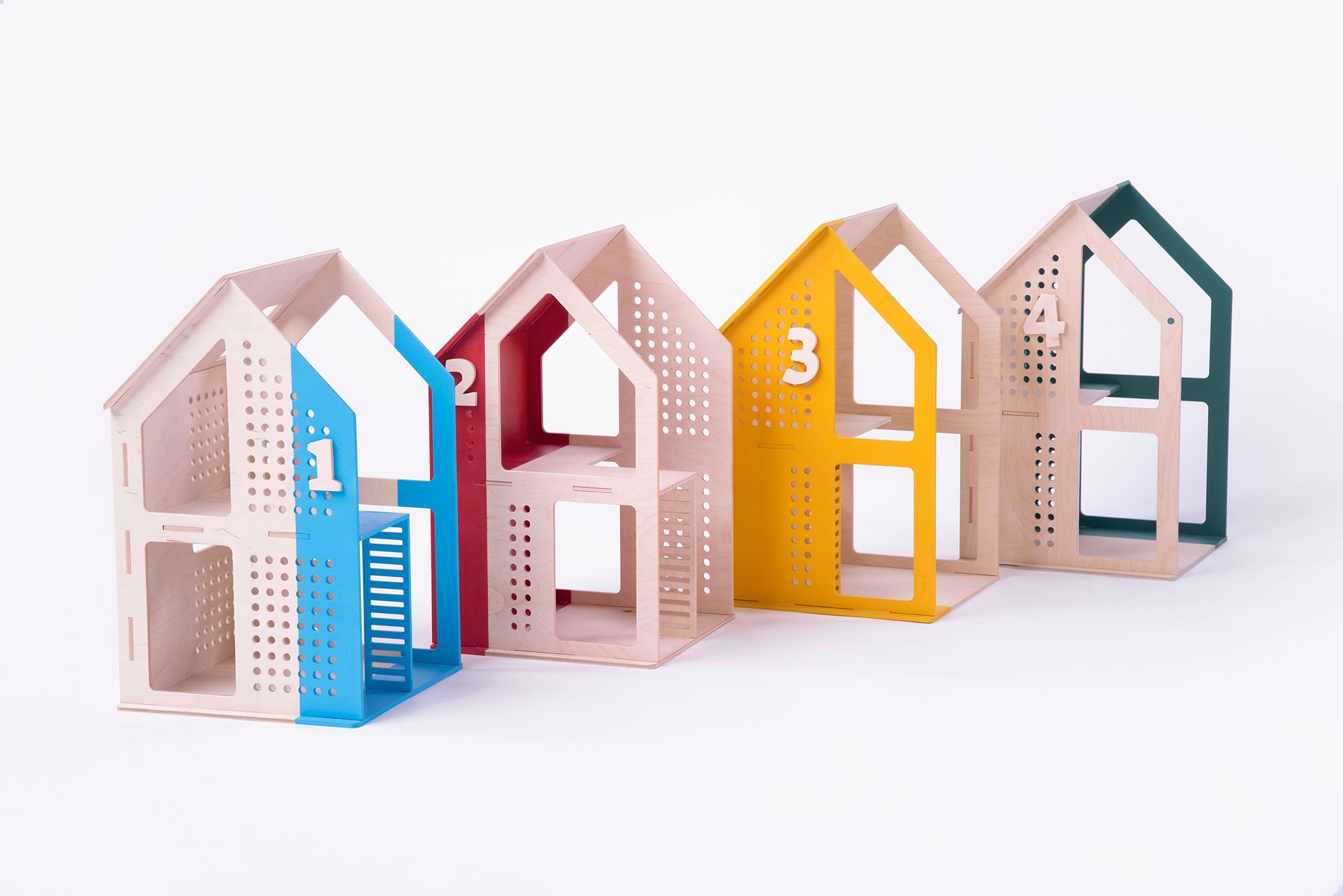
Nejbi’s peculiarity lies in the fact that it is not a simple house, rather the mapping of a small community: the set includes four wooden houses, home furnishing and decoration elements as well as figures of the people living in the community and their pets. The name of the set also alludes to this concept: Nejbi is the altered, friendly and loveable version of the English term „neighborhood”.
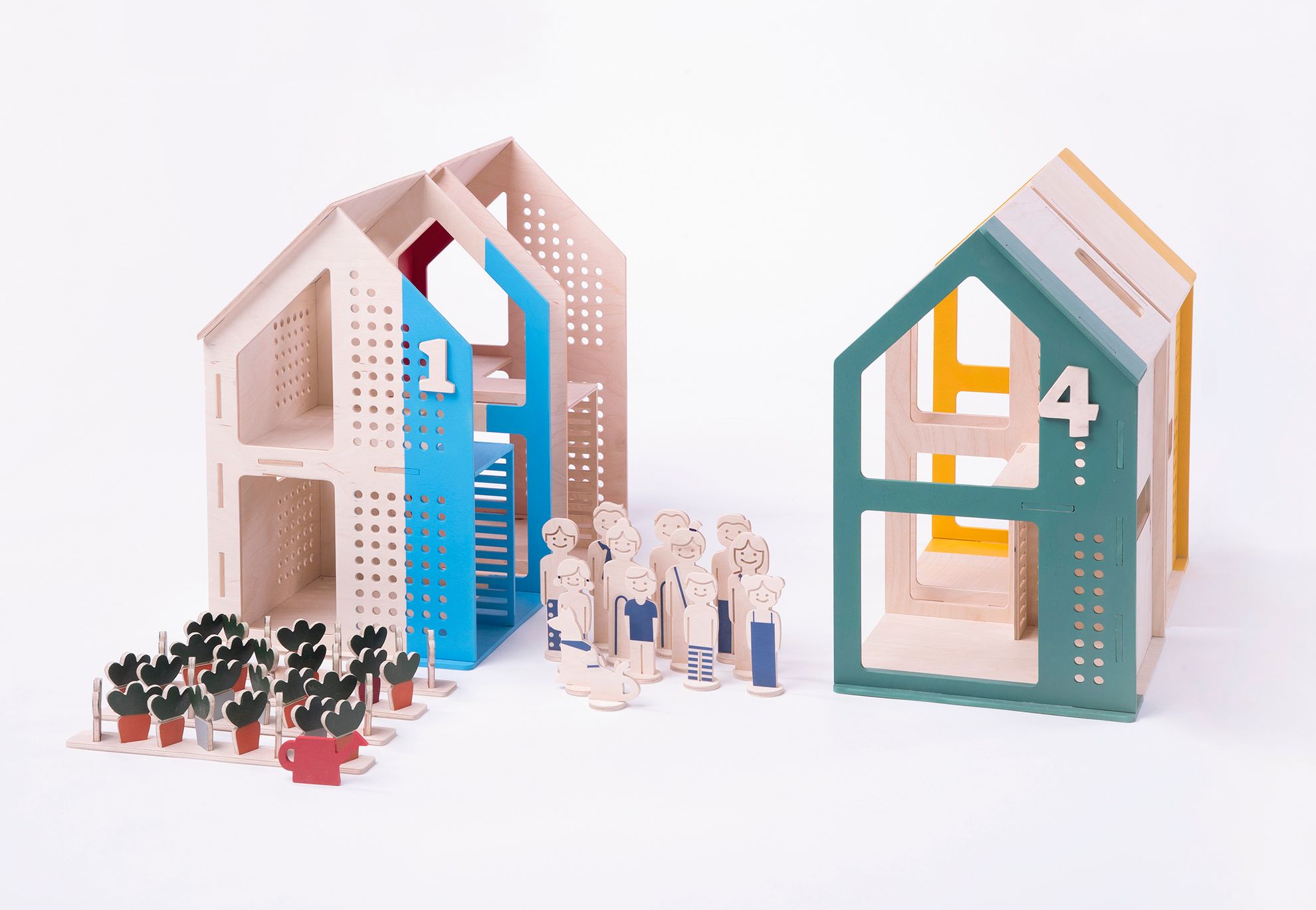
Each and every one of the houses forming part of the set received a different color: they are painted blue, yellow, green and red. Their layouts and aesthetics are not by chance either, as Agnieszka created their final form based on the interviews conducted with children, with the help of a Polish kindergarten. Her research also revealed that not only girls, but boys love to play with little houses, too, and the majority of them prefers simple, colorful wooden houses with a pitched roof.
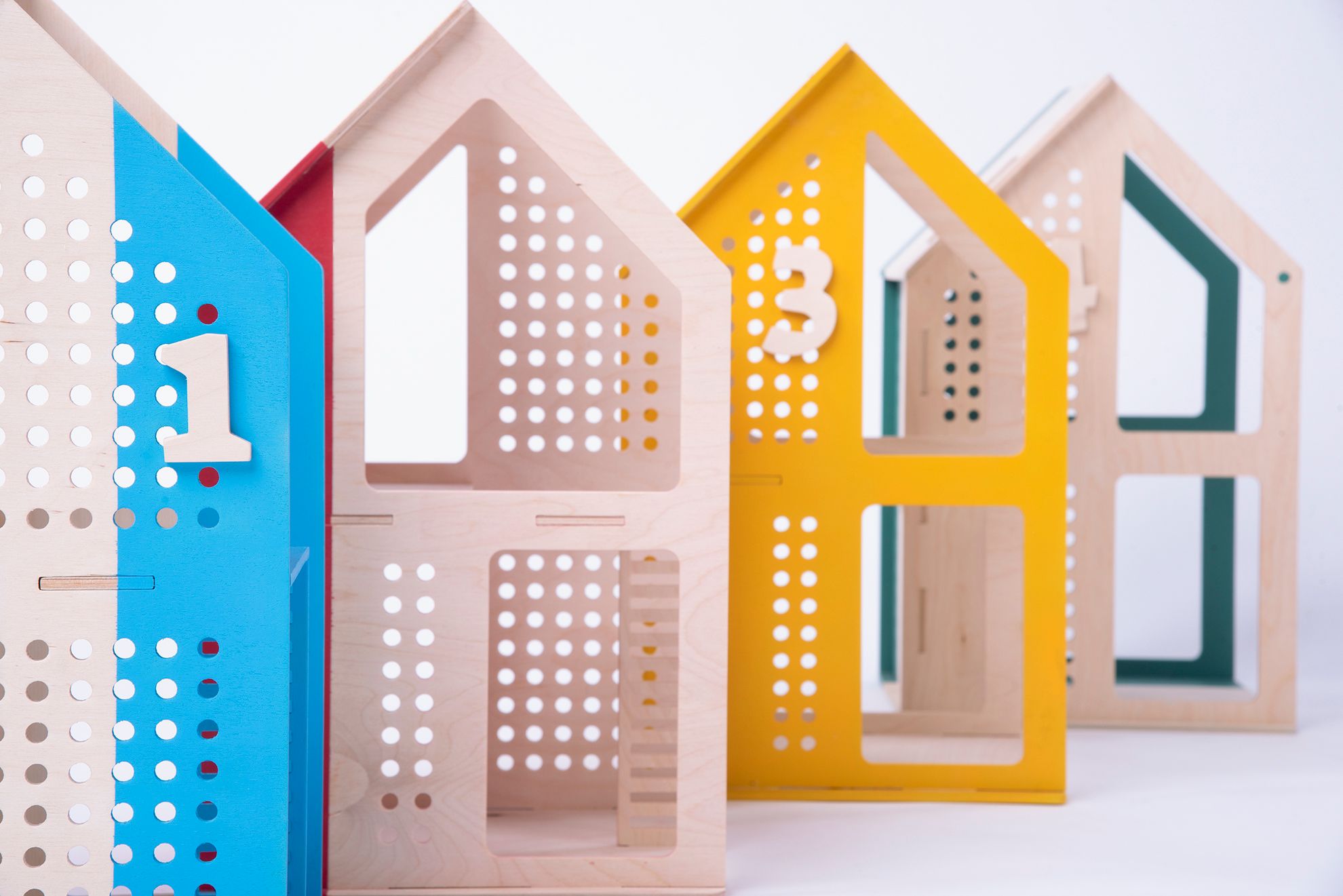
Another important element of the game is the pastel blue deck consisting of 42 cards, helping the children establish their basic set of values and enhance their skills of tolerance, acceptance and empathy.
“The biggest challenge in the design process was the creation of the cards: the text had to be simple, easy to comprehend, and interesting while also maintaining an educational function. We must pose a tiny challenge to children, by providing sufficient space for creativity. In addition, the questions on the cards also had to focus on the various neighbor relationships. I discussed the content of the cards with psychologists various times and we made a lot of changes until we arrived at the final versions” – Agnieszka highlights.
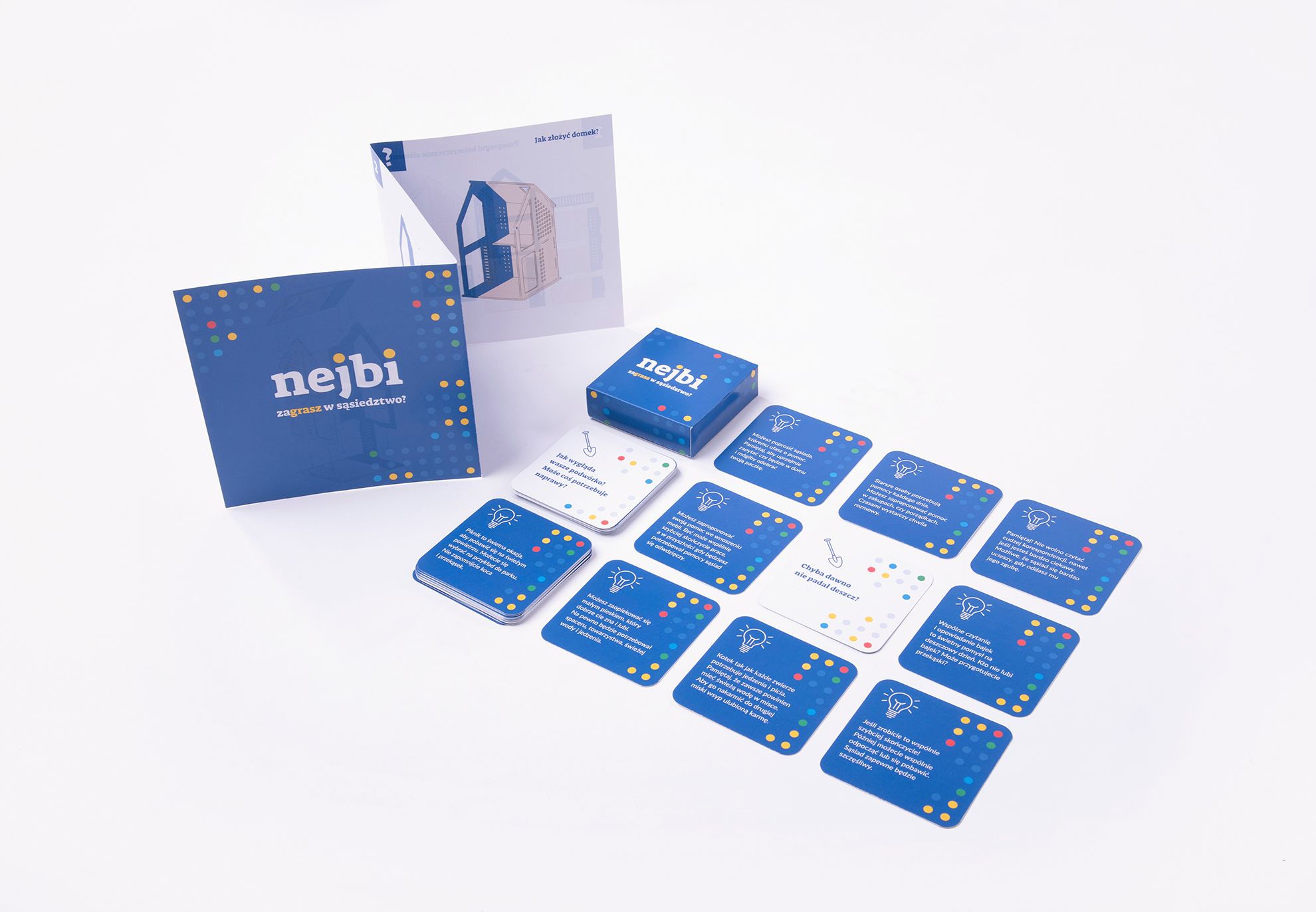
The cards can be divided into three categories, and Agnieszka chose to use pictograms to differentiate between them. These categories are work and duties, helping in the neighborhood as well as entertainment and relaxation. Every card has questions related to the situations belonging to the specific categories, and hints at the right answer written on the back. The purpose of the cards is to develop the children’s competences and sensitivity from carrying out their daily tasks to situations like what they should do when a person living in their community – an old, perhaps disabled neighbor – needs their help. The elements of the dollhouse help the children simulate these situations.
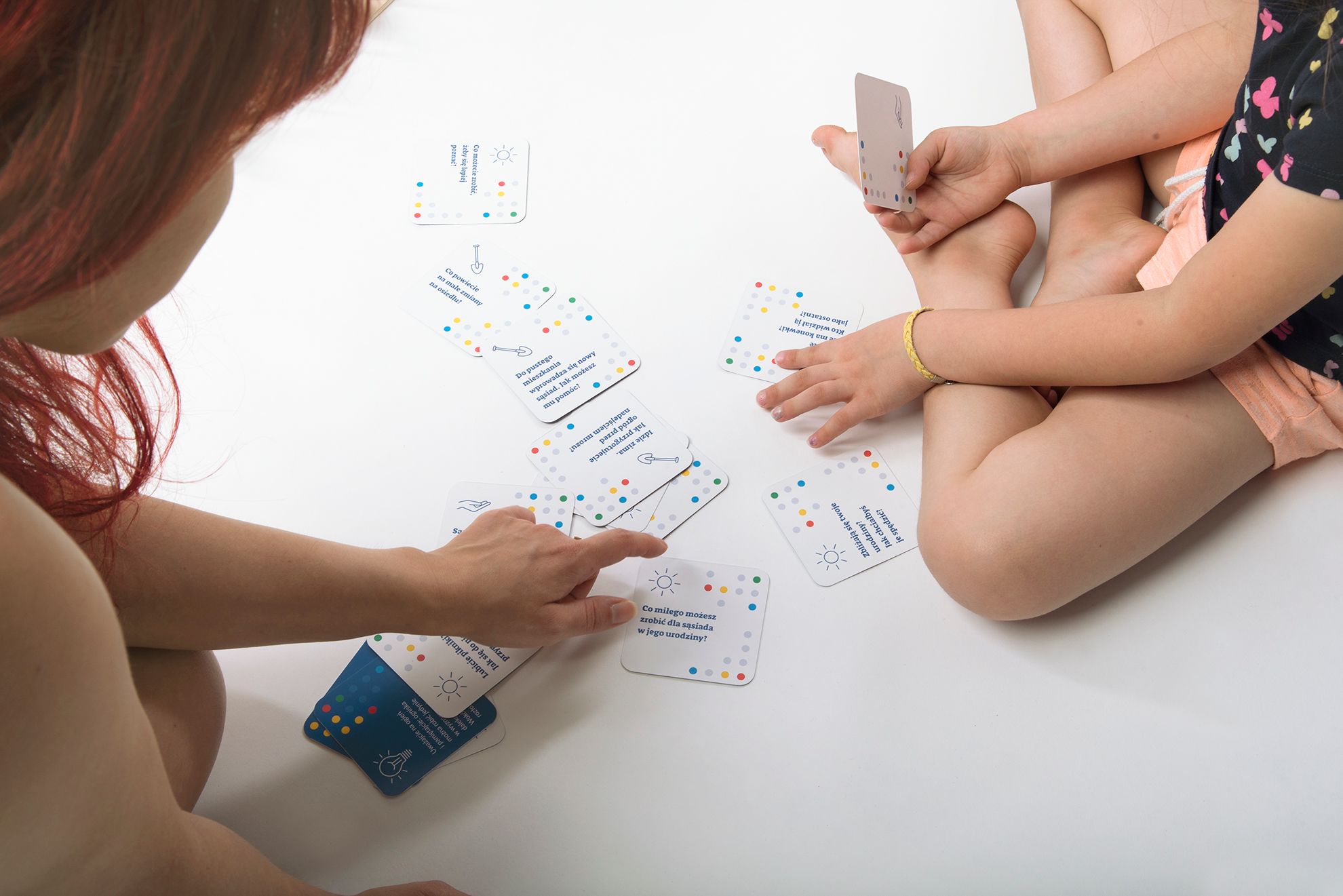
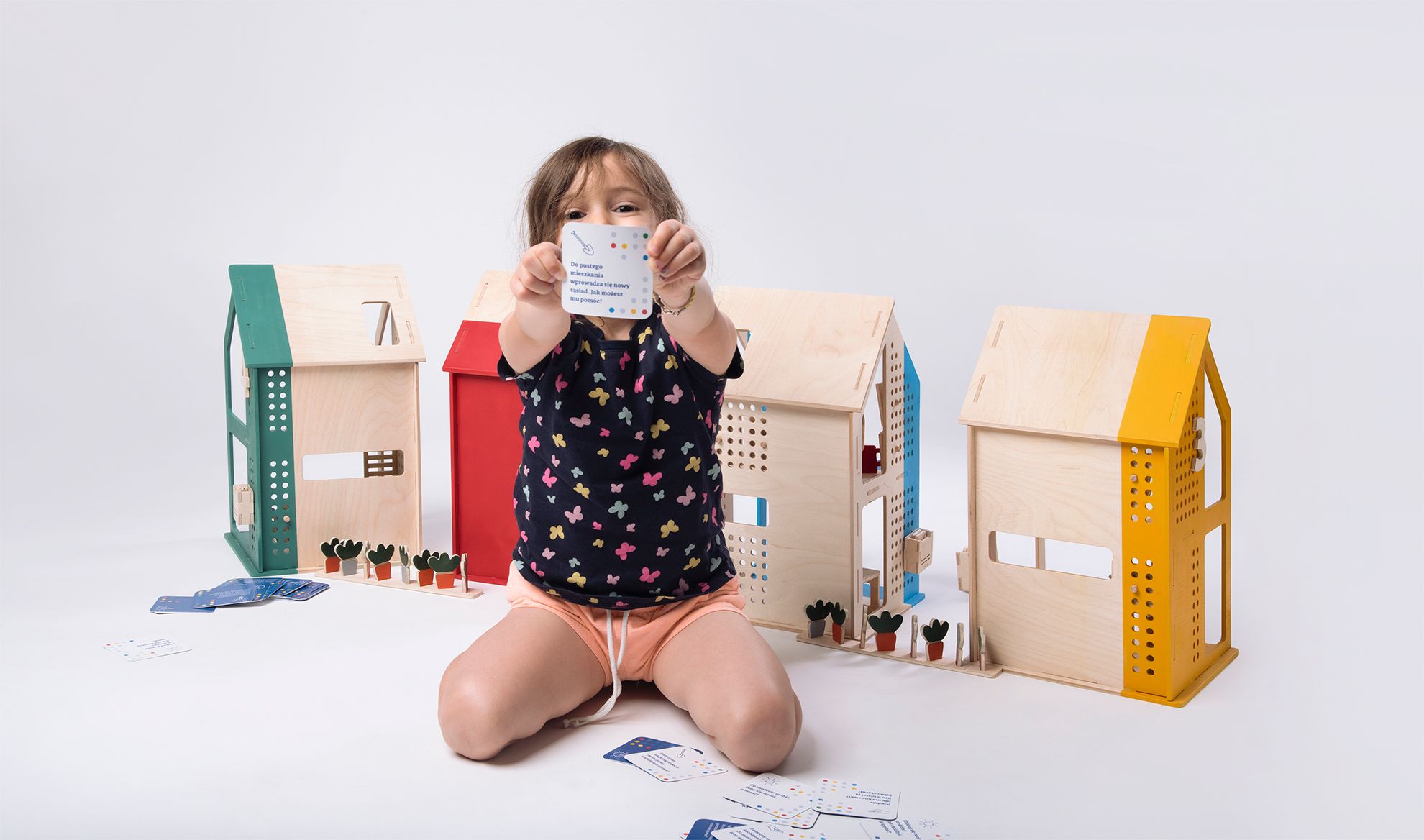
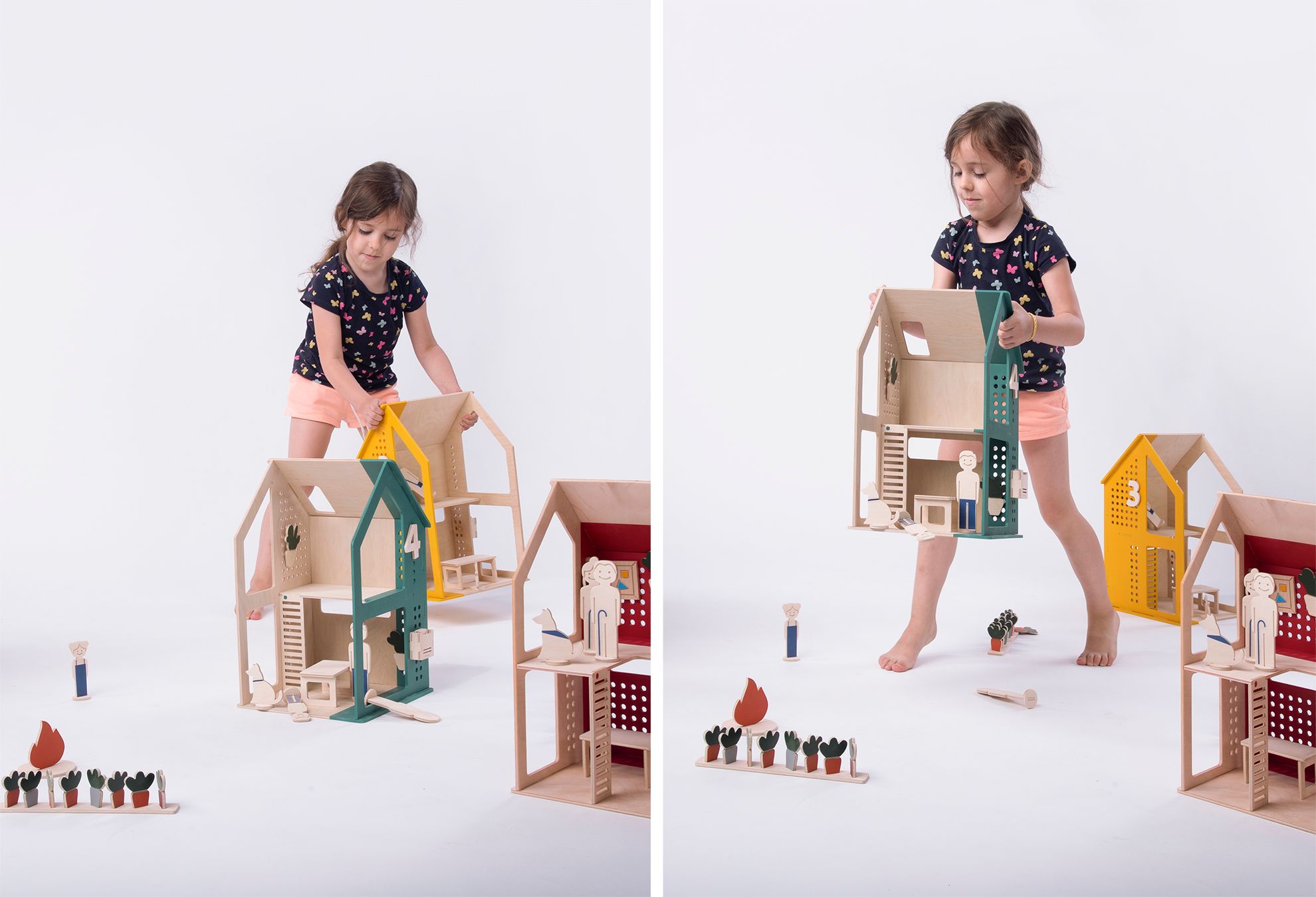
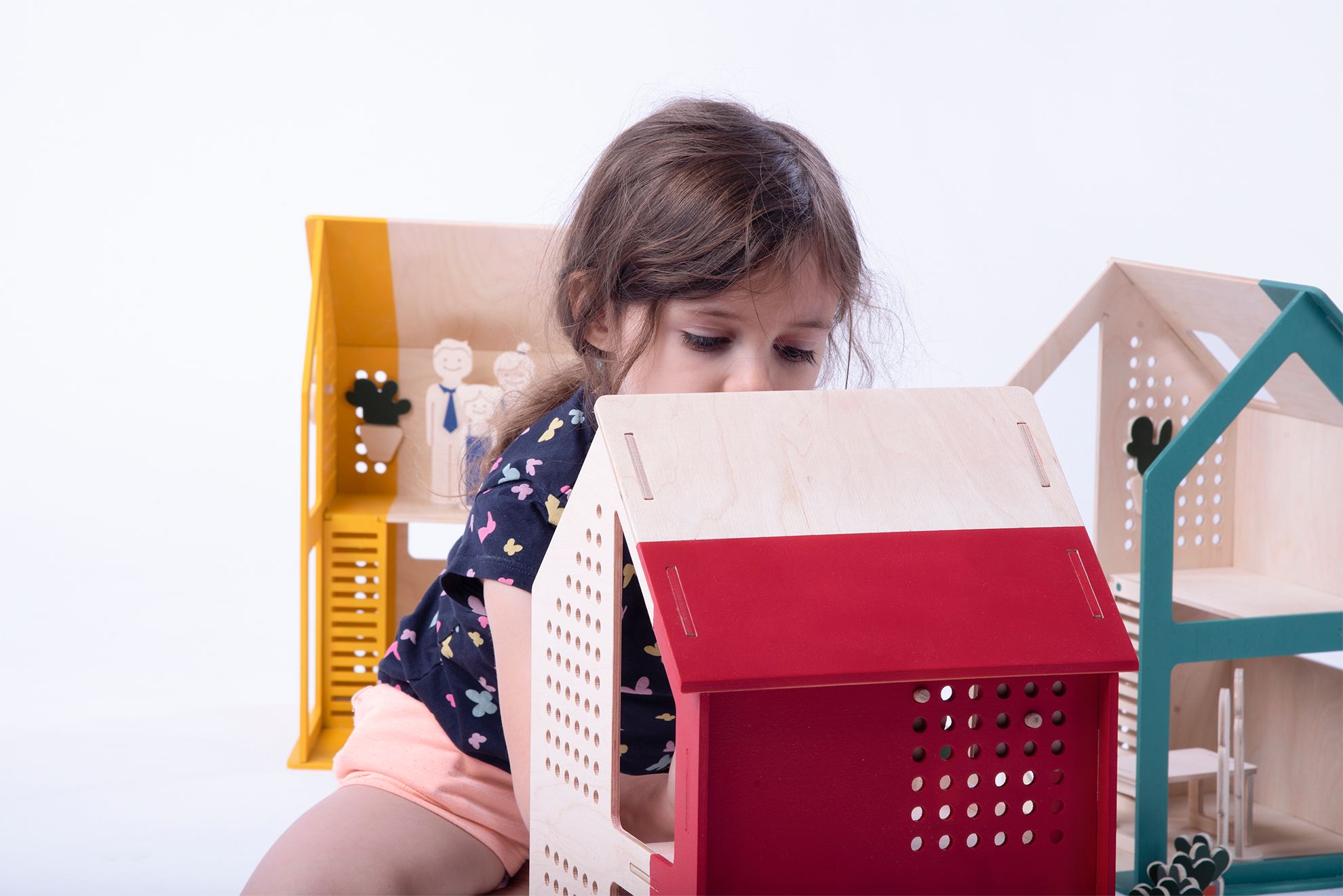
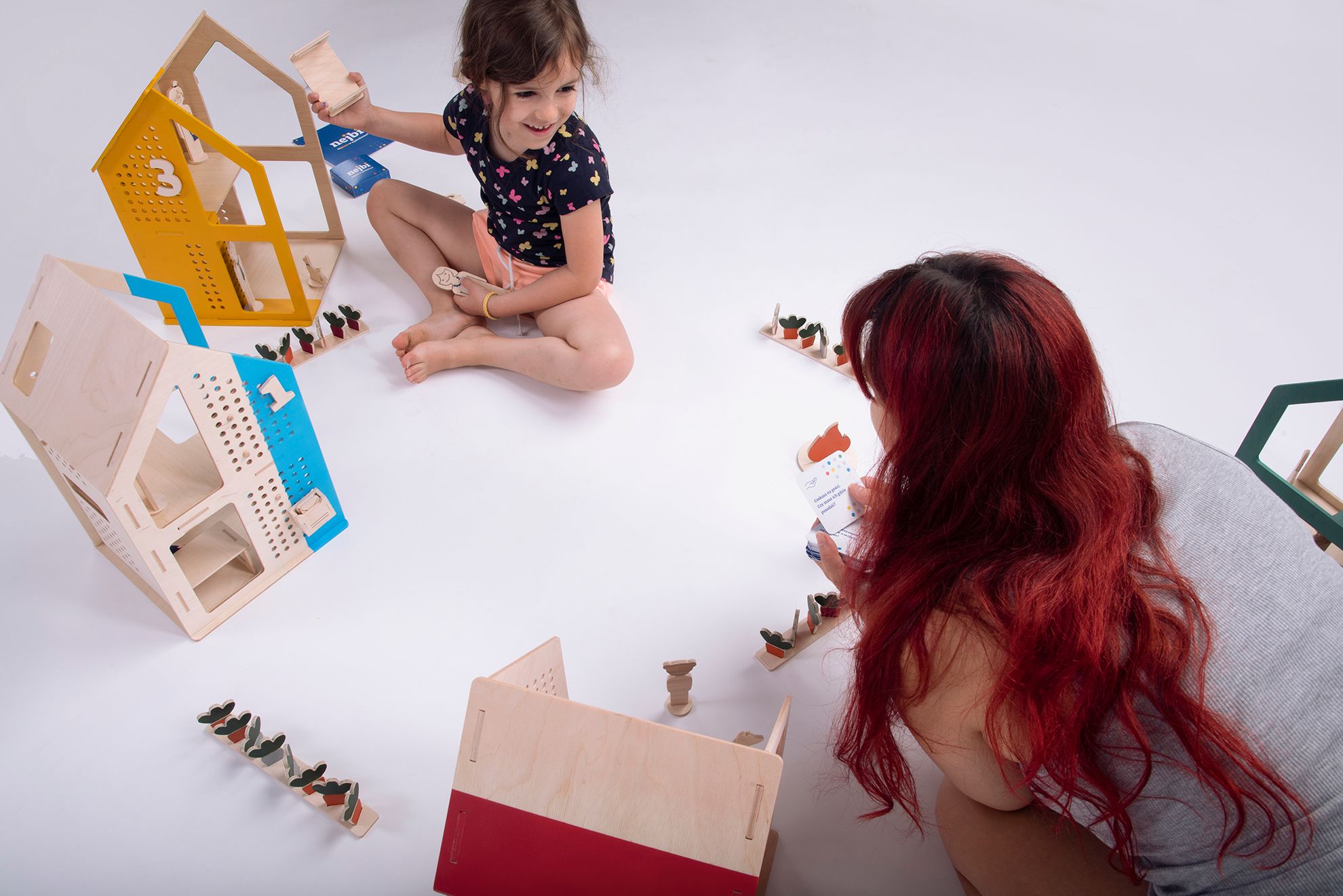
Nejbi is currently a prototype, but Agnieszka hopes it will soon be available in stores and many kids will get to try it.
If you’d like to dive into the topic of inclusive design, we also recommend the first part of our Katowice edition, focusing on the rehabilitating boardgame named DUEL:
Agnieszka Pluszczewicz | Facebook | Behance | Instagram
Academy of Fine Arts in Katowice | Web | Facebook | Instagram
Our INCLUSIVE article series presents projects that raise awareness to the society-shaping role of design and that promote the social visibility of people with disabilities and their self-determination through the means of inclusive design.
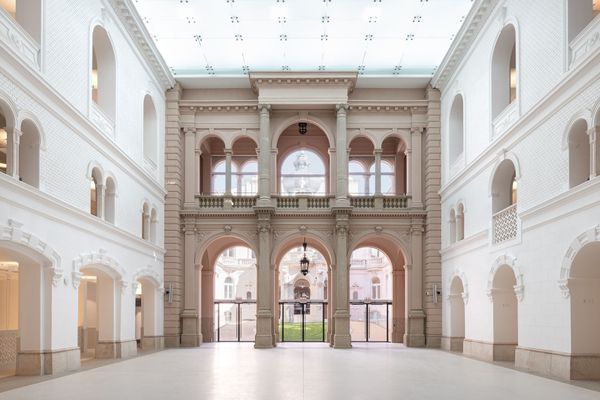
Renovation of Károlyi-Csekonics Palace complete

Split in silence
